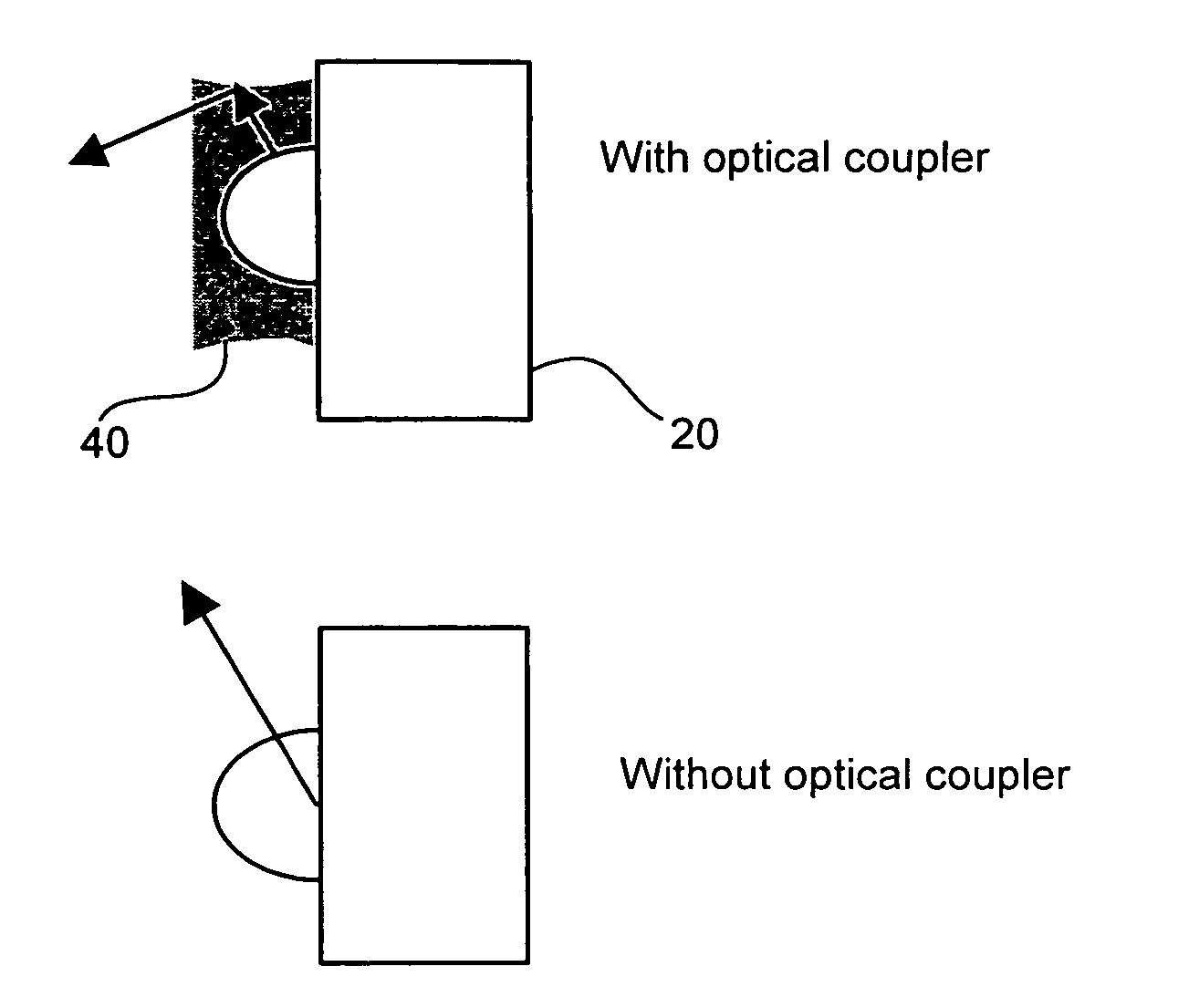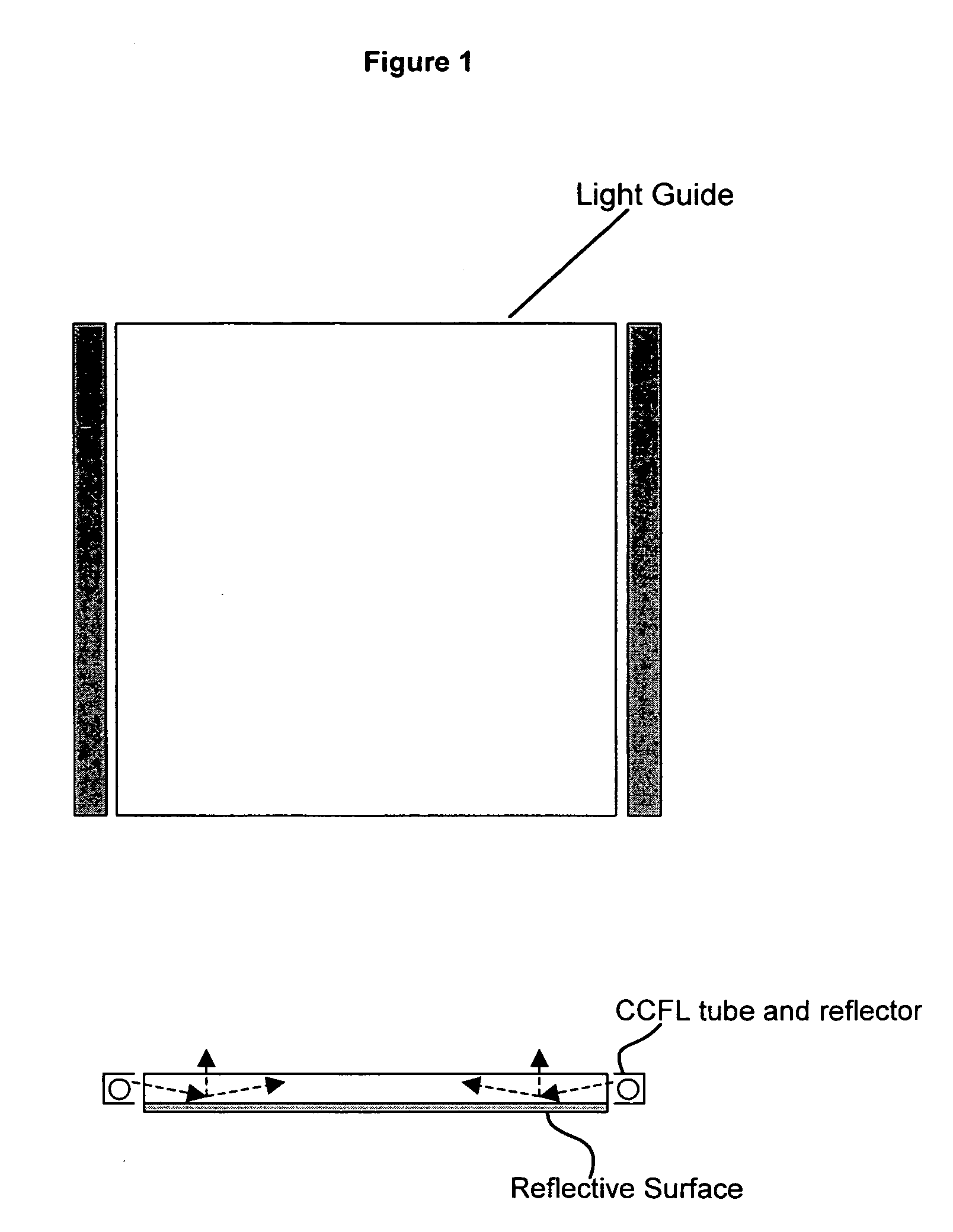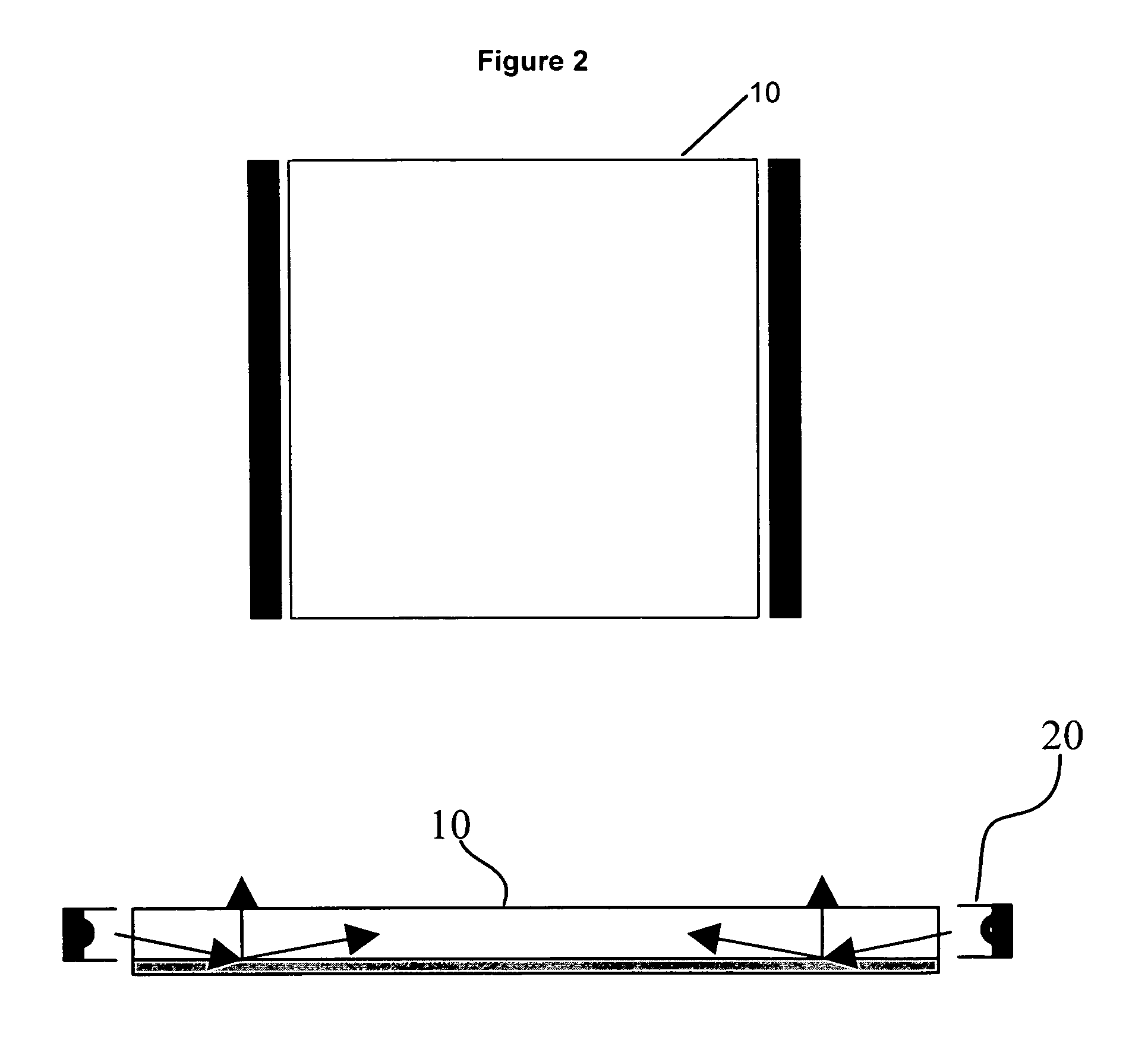Display backlight with improved light coupling and mixing
a technology of backlight and assembly, which is applied in the field of display backlight assembly, can solve the problems of light entering the light guide from the edges, assembly is typically fragile, and contains environmentally hazardous materials, so as to improve the management of light emitted, improve the coupling and mixing, and eliminate the effect of air gap
- Summary
- Abstract
- Description
- Claims
- Application Information
AI Technical Summary
Benefits of technology
Problems solved by technology
Method used
Image
Examples
Embodiment Construction
[0027]FIG. 2 shows an exemplary display backlight assembly using a solid state light source (SSLS) 20, according to an embodiment of the present invention. The SSLS 20 according to the embodiment shown in FIG. 2 may include any suitable solid state light source, such as, for example, light emitting diodes (LEDs), solid state lasers, or other suitable semi-conductor-based light source. Furthermore, the SSLS 20 may include one or more resonant cavity light emitting diodes (RCLED), one or more super luminescent light emitting diodes (SLEDs), or one or more organic LEDs. One having ordinary skill in the art will appreciate that the SSLS 20 may include multiple devices (i.e., multiple LEDs) and may include devices that emit light at multiple wavelengths (i.e., a multi-colored array of LEDs). For example, a LED-based SSLS 20 may include an array of red LEDs (labeled as “R” in FIGS. 3-6), green LEDs (labeled as “G” in FIGS. 3-6), and blue LEDs (labeled as “B” in FIGS. 3-6).
[0028]FIG. 3 sh...
PUM
 Login to View More
Login to View More Abstract
Description
Claims
Application Information
 Login to View More
Login to View More - R&D
- Intellectual Property
- Life Sciences
- Materials
- Tech Scout
- Unparalleled Data Quality
- Higher Quality Content
- 60% Fewer Hallucinations
Browse by: Latest US Patents, China's latest patents, Technical Efficacy Thesaurus, Application Domain, Technology Topic, Popular Technical Reports.
© 2025 PatSnap. All rights reserved.Legal|Privacy policy|Modern Slavery Act Transparency Statement|Sitemap|About US| Contact US: help@patsnap.com



